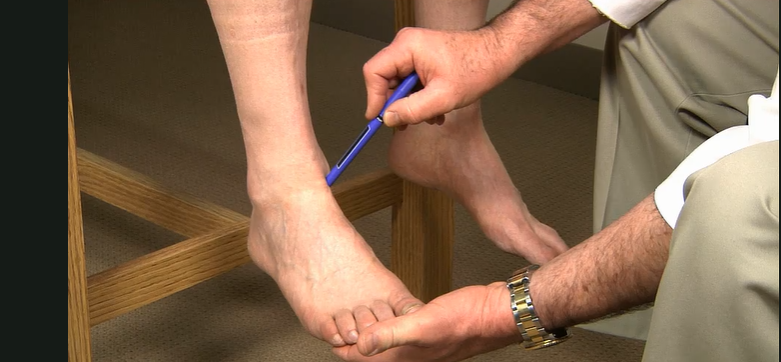Ankle Disorders – Key points
- The ankle is the most frequently injured joint in the body.
- Treatments include both surgical procedures and nonsurgical options.
- Most ankle disorders can be prevented by warming up before physical activity.
Your ankle helps to balance and stabilize your body. It’s made up of bones that are supported with muscles and ligaments.
Ankle disorders can result from damage to bone, muscle, or soft tissue.
Common ankle disorders include:
- Sprains (injury to ligaments)
- Fractures
- Tendonitis (inflammation of the tendons)
- Arthritis (chronic inflammation of joints)
The ankle is the most frequently injured joint in the body. According to research published by the Walter Reed Medical Center, more than 20,000 ankle sprains occur each day in the United States.
What causes ankle disorders?
The causes of ankle disorders vary, and can include running, jumping, and overuse. Other common causes of ankle sprains and fractures include:
- Twisting or rotating the ankle beyond the normal range of motion
- Tripping or falling
- Landing on the foot with increased force
Other injuries that can lead to tendonitis in the ankle or Achilles tendonitis can be caused by:
- Lack of conditioning for the muscles in the leg and foot
- Excess strain on the Achilles tendon, the tendon that connects your calf muscles to your heel
- Bone spurs in the heel that rub on the Achilles tendon
- Untreated flat feet leading to additional stress on the posterior tibialis tendonDifferent types of arthritis (inflammation of joints and tissues) can also affect the foot and ankle:Different types of arthritis (inflammation of joints and tissues) can also affect the foot and ankle:
- Osteoarthritis is a degenerative type of arthritis that typically begins in middle age and slowly progresses. Over time, cartilage between your bones becomes worn down. This results in pain and stiffness in your joints.
- Rheumatoid arthritis is an autoimmune inflammatory disease. It occurs when your body mistakenly attacks its own healthy tissues. RA affects your joints and also destroys cartilage.
- Post-traumatic arthritis occurs after an injury to your foot or ankle. Stress from the injury can cause your joints to become stiff or inflamed, even years after the injury occurred.
What are the symptoms of ankle disorders?
The symptoms of ankle disorders will vary based on the specific type of injury. Common symptoms include:
- Pain
- Swelling
- Stiffness
- Problems moving the ankle
- Inability to put any weight on the ankle
- Difficulty walking
- Bruising
Tendonitis and Achilles tendonitis may produce similar symptoms, but can be accompanied by:
- Pain along the back of the heel that gets worse throughout the day
- Thickening of the tendon
- Swelling that gets worse with physical activity
- Loud popping sounds at the back of the heel, signaling a ruptured tendon. If this occurs, seek emergency medical attention
How are ankle disorders diagnosed?
To diagnose an ankle disorder, your doctor will evaluate your symptoms, examine your ankle and foot, and ask about any recent injuries.
To look for bone fractures or tendon tears, imaging tests will be needed. These tests include:
- X-ray
- Magnetic resonance imaging (MRI)
- Computed tomography (CT) scan
How are ankle disorders treated?
Treatment will depend on your condition and your symptoms. Treatments can include nonsurgical and surgical options. Nonsurgical options involve:
- Taking pain medications
- Taking medications to reduce swelling and inflammation, like aspirin or ibuprofen
- Resting and elevating your ankle
- Applying ice packs to reduce swelling
- Wearing compression bandages or casts to immobilize your ankle
- Getting cortisone (steroid) injections to reduce pain and swelling
Severe fractures or ruptured tendons may require surgical treatment. Surgical procedures used to treat ankle disorders include:
- Reconstruction to rebuild bones, joints, tendons, and ligaments in your ankle
- Removal of damaged tissue (debridement)
- Lengthening the calf muscles to reduce pressure on your Achilles tendon
- Fusion of the bones in your ankle to make it more stable (arthrodesis)
- Replacement of your ankle joint (arthroplasty)
What is the long-term outlook for an ankle disorder?
If you have an ankle disorder, your long-term outlook will depend on the severity of your disorder and the amount of damage to the ankle. It will also depend on whether or not you need surgery.
Ankle sprains are quite common and generally heal within six weeks. Similar outcomes can be expected if you have an ankle fracture and don’t require surgery.
If your ankle disorder requires surgery, full recovery may take several weeks or months. You may also need physical therapy to help strengthen your ankle. Physical therapy may last as long as 12 months.
Although surgery for most ankle disorders can be helpful for improving mobility, all surgical procedures carry potential risks like the potential for infection and nerve damage.
According to the American Academy of Orthopaedic Surgeons (AAOS), the most common complication is moderate to severe pain following surgery.
How can you prevent ankle disorders?
You can prevent ankle disorders by maintaining good physical fitness, strength, and flexibility. Regular exercise is crucial for building strong bones and maintaining good balance. Other behaviors that can prevent ankle disorders include:
- Stretching and warming up before and after physical activity
- Wearing comfortable shoes that provide ankle support
- Paying attention to your body’s warning signs — don’t push yourself too hard
Most ankle injuries can be avoided by taking the proper precautions before strenuous exercise. If you do feel unusual pain in your ankle during physical activity, or suspect an injury, contact your doctor immediately.




